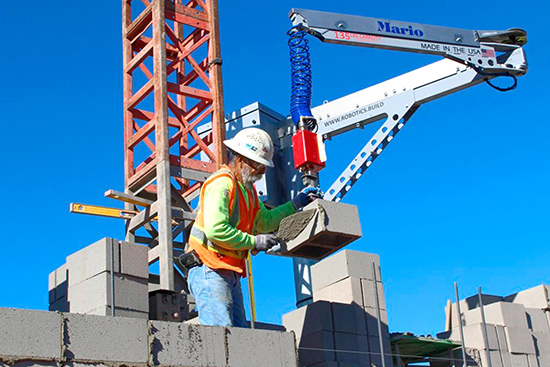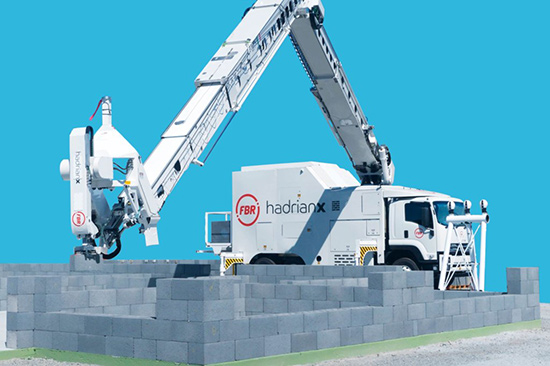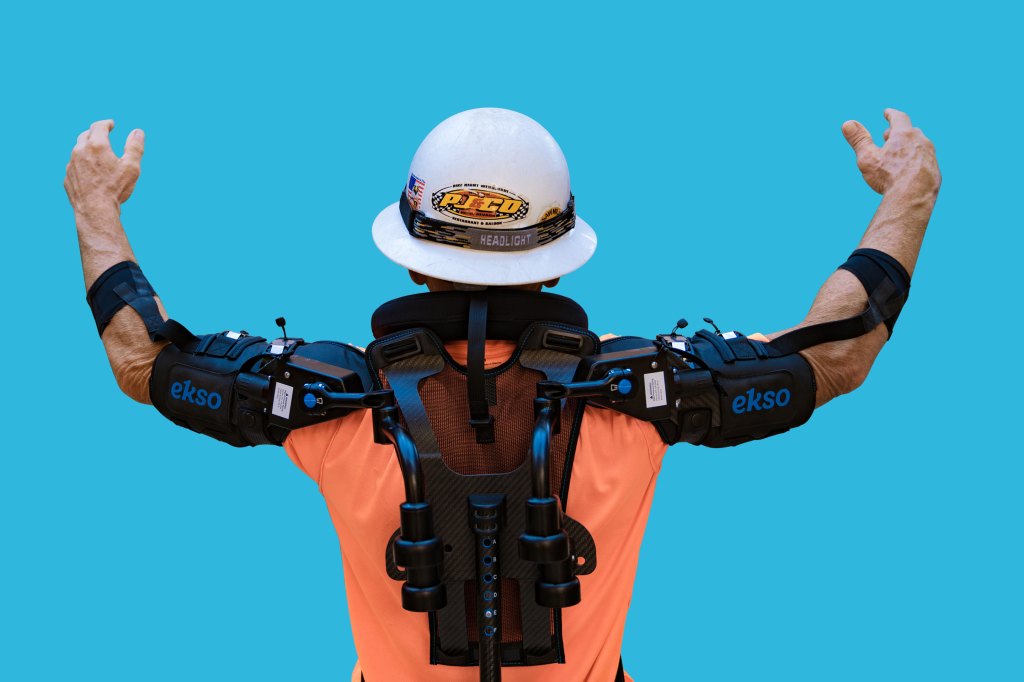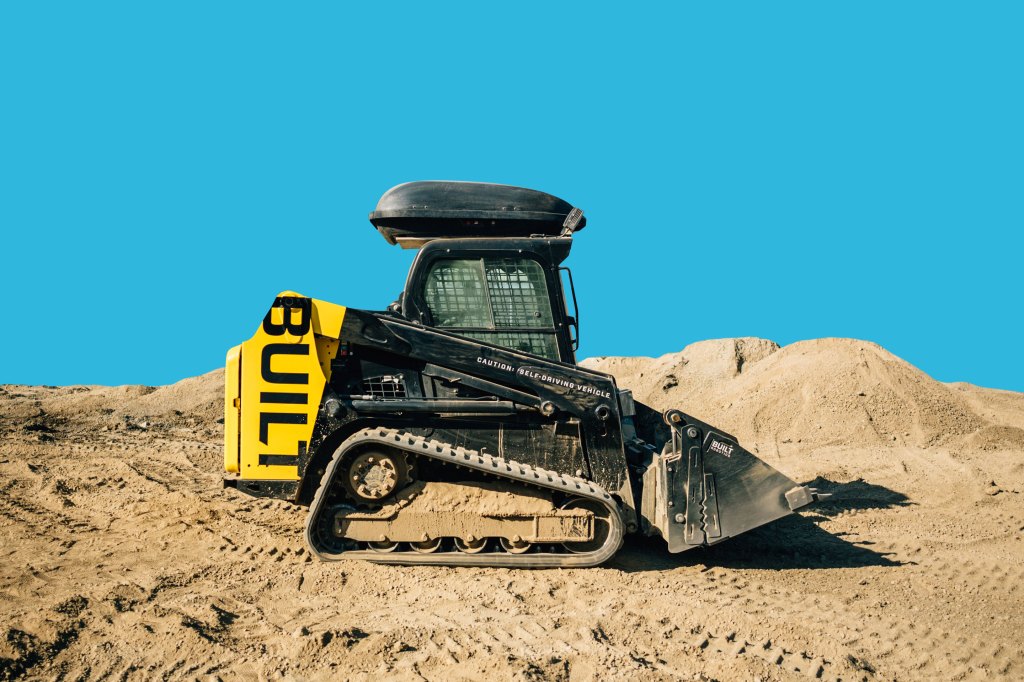机器人正在改变建筑行业

|
在密歇根湖畔,20名泥瓦匠正在伊利诺伊州的大湖区海军基地修建一座巨大的宿舍,面积有三个足球场那么大。和前些年相比,这些泥瓦匠做的铺砌和“抹油”工作要少得多了,相反,他们的重点变成了质量控制和清理灰浆接缝。 一个名叫SAM的机器人承担了真正的重体力劳动。 SAM的外形就像从笼子里伸出的一只金属爪子,沿墙来回移动,每8至12秒砌一块砖。它的旁边是另一个有着3.6米长机械臂的机器人MULE,能够轻松地举起沉重的混凝土砌块并在工人的引导下将其放到位。 这两个机器人可从早忙到晚,从不请病假,也不会累。负责海军项目的大型通用承包商Clark Construction公司的高级项目经理泰勒·肖克罗斯表示:“说到底就是可靠性以及完成这项工作的确定性。” 如今,可靠性是建筑业的大问题,而全球每年的建筑开支已经接近10万亿美元。咨询公司麦肯锡的数据显示,绝大多数的大型工程项目都会超支,耗时也比预期长20%。 造成这个问题的部分原因是劳动力短缺。软件公司欧特克和美国通用承包商协会(Associated General Contractors of America)进行的调查显示,今年8月,建筑行业有710万个空缺职位,而且有80%的建筑公司表示很难招到人。 建筑工作,无论是修桥、铺路还是盖房子,都是脏活累活,而且很危险。美国劳工统计局的数据表明,建筑业是工作场所伤亡最多的行业之一,2017年,有965名建筑工人在工地丧生。 投资者认为技术可以消除建筑业的一些不利因素。去年,他们向科技初创公司投入了31亿美元,这些公司的业务覆盖了建筑业的方方面面,从排班软件到预制房屋工厂,再到SAM这样的机器人。 Construction Robotics公司的总部设在纽约州维克托镇,是机器人SAM和MULE的制造商。该公司的联合创始人斯科特·彼得斯说:“过去三年,情况有了很大的改变。” 但利润率低、风险高而且工期紧张的建筑业是出了名的谨慎。要使用新技术,承包商就得重新考虑开展工作的方式,而这会增加成本和风险。 麦肯锡的一位合伙人何塞路易斯·布兰卡说:“如果发生事故,谁来承担责任?没有人想第一个出问题。” 当然,对机器人应用的推动仍然处于初期阶段。虽然某些种类的建筑工作已经可以使用这项技术,但精细度要求更高的电工和木工还不行。价格是另外一个主要绊脚石。比如,Construction Robotics公司的机器人售价为7.5万美元到50万美元。 彼得斯说,即使建筑公司的高管青睐新技术,但让所有人,包括工头和一线工人在内都这么想可能很困难。以泥瓦匠为例,2015年,砌砖机器人SAM在一次展销会上首次露面时他们有一些顾虑,因为部分泥瓦匠担心失去工作。彼得斯说:“有些人超级兴奋,还有一些人却吓的要死。” 美国和加拿大手工工人行业组织 “国际砌砖工人和相关工艺工人联合会”(International Union of Bricklayers and Allied Craftworkers)对MULE的态度较为热情。MULE的机械臂可以迅速举起不超过135磅(约65.3千克)的工具、石块和混凝土板,从而让工人不再受体力的限制。 该组织的职业培训部门国家负责人鲍勃·阿诺德说:“对SAM的态度略有不同,因为工人们觉得它正在取代他们,从某种角度来说,有这种可能。” 尽管人们感觉各异,但国际砌砖工人和相关工艺工人联合会已经开始培训它的成员使用这些机器。三年来,Construction Robotics公司的技术已经在三个国家的165处建筑工地上得到了应用。 其他公司也想让自己的建筑型机器人变成热门产品。澳大利亚公司FBR制造的Hadrian X可以在一天内建起一座完整住宅的墙壁,所用的砖块尺寸是传统砖块的12倍。同时,纽约公司Toggle推出的5英尺(约1.5米)高机器人可以举起沉重的混凝土工程钢筋并进行处理,工人只需负责最后的施工步骤。 一批位于旧金山湾区的初创公司也在采取行动。Doxel制造的自动化机器人和无人机拥有三维视觉和人工智能,可以在工地行走或飞行,检查管道施工进度以及是否存在缺陷。Ekso Bionics制造的机械外骨骼可以在头顶钻孔或安装管道这样的工作中支撑工人的胳膊,该公司的另一种机械臂能够帮助工人更轻松地使用沉重工具,从而减少疲劳和受伤的情况。Dusty Robotics制造的小型自动化机器人可以在建筑工地四处移动,并且按照图纸在混凝土楼面上标出墙壁和基础设施的位置。 很少有公司像旧金山初创企业Built Robotics那样尝试“大目标”。这家公司为推土机等重型设备提供自动化技术。比如,它的技术可以让卡特彼勒的牵引车移走土方或者举起木制托架,而且不需要任何人工干预。 |
Along the banks of Lake Michigan, 20 masons lay bricks for a huge dorm, as big as three football fields, at the Naval Station Great Lakes in Illinois. Compared with those in years past, these workers are doing far less laying and “buttering” and, instead, are focused on quality and on cleaning up mortar joints. A robot named SAM handles the real grunt work. SAM, a clawlike metal arm extending from a cage, moves back and forth along the walls, buttering and layering a brick every eight to 12 seconds. Nearby, another robot called MULE uses a burly 12-foot arm to lift heavy cement blocks for workers, who then guide them into place. Neither bot takes sick days or gets sore muscles, and both can work around the clock. “It’s all about reliability and certainty that the job will get done,” says Tyler Shawcross, senior project manager at Clark Construction, the general contracting giant co-overseeing the Navy project. These days, reliability is a big issue in the construction industry, responsible for nearly $10 trillion in global spending annually. The vast majority of large construction projects go over budget and take 20% longer than expected, according to consulting firm McKinsey. The problem is partly owing to a labor shortage. In August, 7.1 million construction jobs went unfilled, and 80% of construction companies say they struggle to recruit and hire people, according to a survey by software firm Autodesk and Associated General Contractors of America. Construction work—whether building bridges, roads, or homes—is dirty, physical, and dangerous. The sector is among the leaders in workplace fatalities, with 965 job-site deaths in 2017, according to the U.S. Bureau of Labor Statistics. Investors think technology can fix some of the construction industry’s downsides. Last year they pumped $3.1 billion into tech startups focused on everything from construction-scheduling software to factories that churn out prefab housing to robots like SAM. “In the last three years, there’s been a big transformation,” says Scott Peters, cofounder of Construction Robotics, based in Victor, N.Y., and maker of the SAM and MULE robots. “Most people understand change is needed.” But with low profit margins, high risk, and tight timelines, the construction industry is notoriously cautious. Adding new technology requires contractors to rethink how they do their work, and that adds to the cost and risk. “If there’s an accident, who is at fault?” says Jose Luis Blanco, a partner at McKinsey. “No one wants to be the first one when it goes south.” The push to use robots is, of course, still in its early days. Although the technology exists for certain kinds of construction work, it isn’t there for electrical work and carpentry, which require more finesse. Price is also a major stumbling block. The robots sold by Construction Robotics, for example, cost $75,000 to $500,000. Even if construction executives favor new technologies, getting everyone else on board, from foremen to frontline workers, can be difficult, says Peters. Masons, for instance, had some misgivings about the SAM bricklaying robot when it was unveiled at a trade show in 2015 because some of them feared losing their jobs. “You got some people who were super excited and other people who were scared to death,” Peters says. MULE has had a warmer welcome from the International Union of Bricklayers and Allied Craftworkers. Its robotic arm can quickly lift tools, stones, and concrete panels of up to 135 pounds, eliminating physical strain on human workers. “SAM is a little bit different,” says Bob Arnold, the national director of the union’s arm responsible for job training, “because they feel that it’s replacing them, and, in a way, it could.” Despite those mixed feelings, the union started training its members to use the machines. Over the past three years, Construction Robotics has deployed its technology on 165 job sites in three countries. Other companies are also trying to gain traction with their construction-focused robots. Hadrian X, by FBR in Australia, builds walls for a complete home in a single day using bricks that are 12 times as large as traditional ones. Meanwhile, Toggle, in New York, makes five-foot-tall robots that can lift heavy steel rebar used in concrete construction and manipulate it, while humans handle the final touches. A host of Bay Area startups are also getting in on the act. Doxel builds autonomous robots and drones with 3D vision and artificial intelligence that roll around and fly over job sites, inspecting how much plumbing work has been done and whether it was done correctly. Ekso Bionics makes robotic vests that support a worker’s arms for jobs like drilling or installing piping overhead. It also sells a robotic arm that makes it easier for workers to use heavy tools, reducing fatigue and injury. And Dusty Robotics makes small autonomous bots that roll around construction sites and mark lines on concrete floors that indicate the location of walls and infrastructure, based on construction documents. Few companies are trying anything as ambitious as San Francisco startup Built Robotics. It sells autonomous technology for bulldozers and other heavy equipment. The tech can enable a Caterpillar tractor, among others, to move dirt and lift pallets of wood—all without anyone in the cab. |

|
那些“大脑”,也就是传感器、人工智能和摄像头的组合,安装在工程机械驾驶室上方,看起来就像轿车的行李架。软件工程师必须和承包商合作,针对具体工作编写自动化引导程序,承包商则按月为这样的技术付费。 Geofences可以告诉计算机工地的边界在哪里,它和远程切断按钮一起防止工程机械出问题。在分析其工作的机器学习软件帮助下,这些工程机械应该可以逐渐变得聪明起来。 大型承包商Mortenson把Built Robotics公司的自动化技术用在了牵引车上,而这些机械正在得克萨斯、堪萨斯以及科罗拉多东部农村地区的五座风电场移动土方并修筑道路。Mortenson的副总裁埃里克·塞尔曼说,这些风电场的面积都达到或超过了100平方英里(约259平方千米),是测试此类新技术的理想场所。 他说:“这些机器人正在变得越来越好,越来越聪明,而且越来越快。” 塞尔曼认为,此项技术让建筑工作变得更安全,因为它让建筑工人远离危险,而且可以把精力集中在其他工作上,比如规划。他们还会承担监督推土机工作的任务,而且经常会同时管理好几台推土机,随后还要检验这些推土机的工作质量。 塞尔曼希望机器人最终能够成为帮助他们招聘的工具,可以鼓励更多的年轻人从事建筑工作。 他说:“还没有任何机器人如何作业或者人们怎样与机器人合作的手册。但我们知道我们现在就需要开始教他们这些技能,以便为今后不同的而且是更聪明的工作方式做好准备。” |
The “brains”—a combination of sensors, intelligence, and cameras—are affixed atop the vehicle’s cab inside what looks like a car luggage carrier. Software engineers must work with on-site contractors, who pay a monthly fee for the technology, to program the autonomous guidance system for specific jobs. Geofences—which tell the computer the physical boundaries of a job site—and remote kill buttons keep the vehicles from going awry. Over time, with the help of machine learning that analyzes their work, the vehicles are supposed to get smarter. Mortenson, a large contracting firm, is using Built’s autonomous technology on tractors that move dirt and build roads at five wind farms in rural Texas, Kansas, and eastern Colorado. Covering 100 square miles or more, the wind farms are ideal places for testing such new technology, says Eric Sellman, a Mortenson vice president. “The robots keep getting better and better, and smarter and faster,” he says. This technology, Sellman says, makes job sites safer by letting construction crews stay clear of danger while they focus on other tasks, such as planning. Workers are also assigned to oversee the bulldozers, often monitoring several machines at once, and then verifying whether they’ve done a good job. Sellman hopes that robots will ultimately become a recruiting tool, encouraging more young people to pursue careers in construction. “There isn’t any rule book yet on how robots and people will work together,” Sellman says. “But we know we need to start teaching our people the skills now to prepare for a future where we work differently and work smarter.” |
****
|
在建筑业站稳脚跟的机器人 初创公司正在设法让建筑业中的各种工作实现自动化。以下是一些实例。 |
Robots Cement Their Place in Construction Startups are working to automate different jobs within the building industry. Here are a few examples. |

|
FBR 该公司的Hadrian X机器人拥有安装在卡车上的机械臂,它砌墙的速度比人快,使用的砖块尺寸是传统砖块的12倍。 |
FBR This company’s Hadrian X robot has a mechanical arm mounted on a truck that builds walls faster than humans, with bricks that are 12 times as big as traditional ones. |

|
EkSo Bionics 该公司的外骨骼支撑着工人的胳膊和后背,为他们提供超级英雄般的力量,从而减少疲劳和受伤情况。它的另一种机械臂则让沉重的工具看起来轻如鸿毛。 |
EkSo Bionics Its vest supports workers’ arms and backs to provide superhero strength, reducing fatigue and injury. A separate robotic arm makes heavy tools seem weightless. |

|
Built Robotics 一套由摄像头、GPS、传感器和人工智能组成的系统让推土机等重型工程机械实现自动作业,可以在没有人员操作的情况下进行土方挖掘。(财富中文网) 本文另一版本登载于《财富》杂志2019年12月刊,标题为《投身建筑业的机器人》。 译者:Charlie 审校:夏林 |
Built Robotics A system of cameras, GPS, sensors, and A.I. turns bulldozers and other heavy equipment into autonomous vehicles that can dig without human operators. A version of this article appears in the December 2019 issue of Fortune with the headline “Bots Start Building.” |













